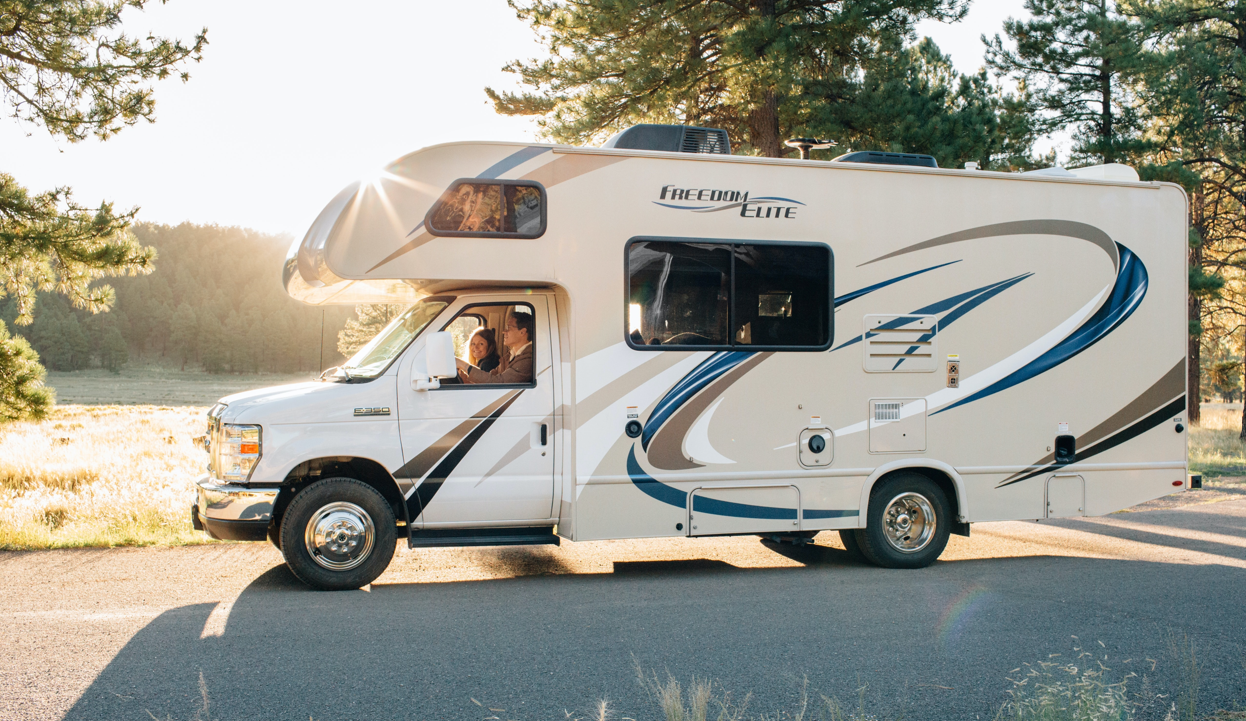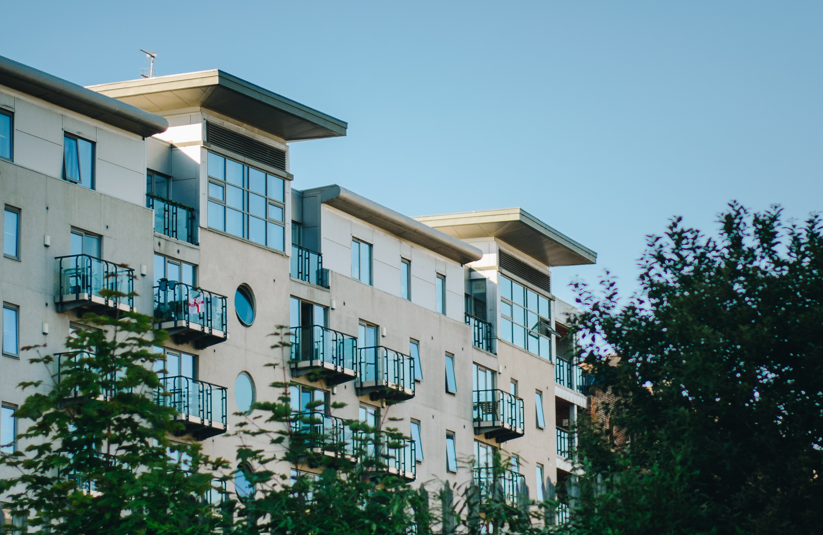If you want to travel without leaving behind the comforts of home, a recreational vehicle might be perfect for you
By Olev Edur
With the COVID-19 pandemic having put a crimp in everyone’s international travel plans over the past two years, more and more Canadians have been limiting their holidays to Canada. Many, including retirees, have been turning to recreational vehicles (RVs) as a way of getting around the country without exposing themselves to the dangers of infection in airports, hotels, and restaurants.
Retail sales of RVs in Canada amounted to approximately $9.91 billion in 2020 according to Statista, a U.S.-based provider of global market and consumer data. That’s a 65 percent increase over the $6 billion total for 2013 and 12 percent higher than the $8.88 billion figure for 2019. Moreover, the RV trend is likely to accelerate as the pandemic subsides and international borders reopen.
Green light for U.S. borders
Catherine Twerd, a sales manager with Sicard RV in Smithville, Ont., estimates that as many as 50 percent of her customers have traditionally been retirees. That number has been lower during the pandemic, she says, but “the big factor is the U.S. border opening. The number of retirees in the past couple of years has been a bit less than normal because the border was closed. However, a lot of snowbirds normally take RVs south, so we anticipate that with the border open again, those numbers will get higher.”
Although the pandemic is seemingly beginning to wane, it could easily flare up again, so limiting one’s exposure by sleeping and dining in the equivalent of a private house on wheels can be particularly appealing. As Shane Devenish, the president of the Canadian Recreational Vehicle Association, explained a few months into the pandemic, “RVs are more desirable now because people can eat meals in a private space, use a private washroom and bed, and have peace of mind knowing who is sanitizing the space and how.”
The Costs of RVing
If you haven’t already adopted the RV lifestyle, how do you get on board—and what would it cost?
There are RV models to suit virtually any budget. Auto Trader’s online RV listings (autotrader.ca/rv) show prices ranging from a few thousand dollars for a used pop-up trailer to several hundred thousand dollars for a new, luxury Class A motorhome loaded with every conceivable creature comfort. (See the sidebar for an explanation of the basic types and classes of RVs.)
Three industry groups
Three industry groups—Go RVing Canada (gorving.ca), the Recreation Vehicle Dealers Association of Canada (rvda.ca), and the Canadian Recreational Vehicle Association (crva.ca)—commissioned a joint study in 2020 to assess the costs of RV vacations under various scenarios, comparing these prices to those of similar vacations using other modes of transportation and with a variety of sleeping and dining options. According to the findings, “RV vacations are generally less expensive than those where the travel party stays in a hotel/motel.” Moreover, authors found, “towable RV vacations are more economical than private-property rentals.”
The study can be helpful in calculating costs of RV ownership, although retirees should treat the conclusions with some caution. For example, totals are based on maintaining and using an RV for seven years and then selling it for its full depreciated market value. But do you want to stick to RV holidaying for seven years, or might you want to explore some alternatives after a few years? In the latter case—and in line with study findings—the overall per-trip cost would be higher.
Reselling?
Additionally, can you truly expect to receive the full depreciated value of the vehicle upon reselling it? If you’ve ever tried to sell a used car or other large item yourself, you know it can be a lot more difficult and perhaps less rewarding than simply listing it online and waiting for offers to roll in. After all, most people who buy privately expect better prices. Otherwise, there would be no logic in paying full fare for a private sale when the same vehicle from a dealer would come with expert advice as well as maintenance, warranties, and follow-up services.
However, if buying a used vehicle from a dealership, be aware that warranties can vary from one location to the next. In some cases, you may be able to get the tail end of a manufacturer’s warranty on a late-model RV, and in others, you may be able to buy extra coverage. At Owasco RV Centre in Clarington, Ont., for example, “You can buy extended third-party warranties with our used RVs, just as you can with an automobile,” says Brian Heringer, a sales rep with the company.
At Sicard RV, on the other hand, while newer models may come with transferable manufacturers’ warranties, older ones come with only 30-day warranties on appliances. “It depends on how old the RV is,” Twerd says.
Your budget
As for the buying process itself, most experts recommend that you start with a fixed budget so you know what you’re aiming for. An RV is a big and complex purchase—it can be the equivalent of buying a vehicle and home combined— so unless you know what you’re doing, it would be best to have a knowledgeable advisor with you when buying from a private source. Otherwise, stick with reputable dealers, where you have recourse if something goes wrong.
Summertime is when sales activity and prices are highest, according to the Go RVing website, so to get the best bang for your buck, do your RV shopping in the winter. Moreover, the website states, “Weekends are by far the busiest time for RV dealerships, so it’s best to avoid shopping Friday through Sunday.”
The Rental Alternative
Because of the relatively high initial costs of all but the most modest varieties, and because of the long-term commitment of owning an RV, some retirees prefer to rent. With this option, you pay only for what you need, when you need it, so you don’t have to worry about long-term considerations. Fortunately, many RV dealerships can accommodate your preferences in terms of rentals and sales.
“Prior to the pandemic, 80 to 85 percent of our rentals were to international guests,” says Klaus Gretzmacher, the Calgary-based vice-president of tourism with CanaDream, which specializes in rentals and has facilities near large cities across Canada. “When COVID-19 struck, Canadians began to realize that RVing was the safest way to travel; our Canadian business has been very successful in taking up the slack as our international business disappeared. Now, with the borders open again, we’re very excited about next year.”
Class B or C
All of CanaDream’s units are either Class B or C motorhomes or truck campers, all originally valued at $100,000 or more, and all custom-designed for Cana- Dream. Gretzmacher says that while the company’s focus is on rentals, Cana- Dream is constantly rotating its fleet, selling its units after 18 months of use so that customers always receive the latest models and buyers know that they’re getting relatively new vehicles that have been well-maintained. “Sales are very easy,” he says. “As soon as we list them, people buy them.”
The cost?
The cost of a rental depends on model and location, but prices also vary dramatically depending on the season. For example, in Vancouver, a deluxe camper van suitable for two people and with a fold-out bed, kitchenette, bathroom with shower and toilet, furnace, and solar panel would cost about $850 a week in mid-April (insurance included) but $2,500 a week in early August.
Of course, these prices are for new, highend RVs; lesser models and used RVs at other dealerships would certainly rent for less. And as with purchases, you can probably find a rental to suit any budget.
So whether you choose to rent or buy, take heart that RVs offer a safe and flexible way to travel, whether during a pandemic or not. If the idea is appealing, make your budget—and then go kick some tires and see what you can get for your money. After all, you’re not obligated until you sign on the dotted line.
Types of RVs
There are two basic categories of RV: those that are self-propelled (motorhomes) and those that are towed (trailers). There’s also a hybrid category—the truck camper, which can be mounted on the bed of a pickup— plus several different types within each category, each with a range of features. The prices provided here are based on new models; used RVs will, of course, be less expensive, with costs dependent on age, available features, and overall condition.
Motorhomes
These are generally the high-end choice, frequently offering many features not found in trailers and truck campers. There are three classes of motorhome; some of the largest may require special driver’s licences.
Class A
This type is constructed on its own chassis and generally includes large, high-end units capable of towing cars or even trailers. Prices typically begin at $125,000, with all kinds of creature comforts added in. For example, a brand new 2022 Newmar Dutch Star 4369—at roughly 44 feet (13¼ metres) long and retailing at $649,877—comes with three slide-outs (sections that extend outward from the trailer body when it’s parked, providing extra room), a power awning, full-size fridge, a three-burner oven plus convection microwave oven, two leather sofas, two bathrooms, two TVs, a king-size bed with heated mattress, and a 45,000 BTU air conditioner. Some of these motorhomes are even wheelchair accessible.
Class B
Also known as camper vans, these are built into vans or delivery vehicles and are typically about 13 to 17 feet (four to five metres) long and range in price from $70,000 to $180,000. A higher-end model in this category may be fully winterized and heated, with a high roof, queen-size bed, fridge and cooktop, and bathroom with shower, with solar and battery power for electrical gadgets such as TVs.
Class C
This type of RV is built on a van or truck chassis, with vehicles typically ranging in length from 20 to 30 feet (six to nine metres) and in price from $100,000 to $200,000. Class C motorhomes include all the modern conveniences, appliances, and features of Class B vehicles, with more room—offering a separate bedroom, a bathroom, kitchen, and living area, and sometimes even slide-outs. They’re recognizable by an over-cab berth that provides extra sleeping room. Some are capable of towing.
Trailers
These are the most common RV type due to their price and flexibility. If you choose a trailer, however, you’ll need to own or purchase a towing vehicle, though your choice may be limited to those big and powerful enough. Higherend types usually come with slide-outs to provide extra room. Trailers are further subdivided into the following categories:
Standard trailer
These are available in a wide array of sizes, typically ranging from 13 to 30 feet (four to nine metres) long. Features, too, can vary, from spartan to motorhome-equivalent, and prices typically range from $25,000 to $150,000. While a smaller model may be towed by a six- or eight-cylinder car, generally a van or pickup is recommended.
Fifth-wheel trailer
A vehicle in this group is towed by a pickup truck using a special fifth-wheel hitch in the truck bed. Lengths can range from 20 to 30 feet (six to nine metres) and prices can range from $45,000 to $160,000.
Teardrop trailer
This type of RV is compact, with a back that curves downward, giving the trailer its name.
A relatively small unit, it can be pulled by a car or small SUV, and it generally has a basic kitchen, bathroom, and sleeping area. Prices range from $15,000 to $50,000.
Tent trailer (pop-up)
This is largely the most affordable choice, generally ranging in price from $10,000 to $25,000. A vehicle in this group, typically 7½ to 10 feet (2½ to three metres) long, can be towed by a large car, a minivan, or an SUV. With a canvas or synthetic fabric top raised from a solid bottom section, some varieties may come with slide-outs or even fold-out sections, both of which offer extra room.
Truck Campers
With this type, a camper shell sits on the bed of a pickup truck, so sizes are limited to the size of the truck bed plus up to 3.3 feet (one metre) of overhang (plus an overcab berth). Prices can vary from $20,000 to $65,000— excluding the truck itself, which can cost from $40,000 to $70,000 or more if purchased new. Features are usually typical of those found in Class B motorhomes.






